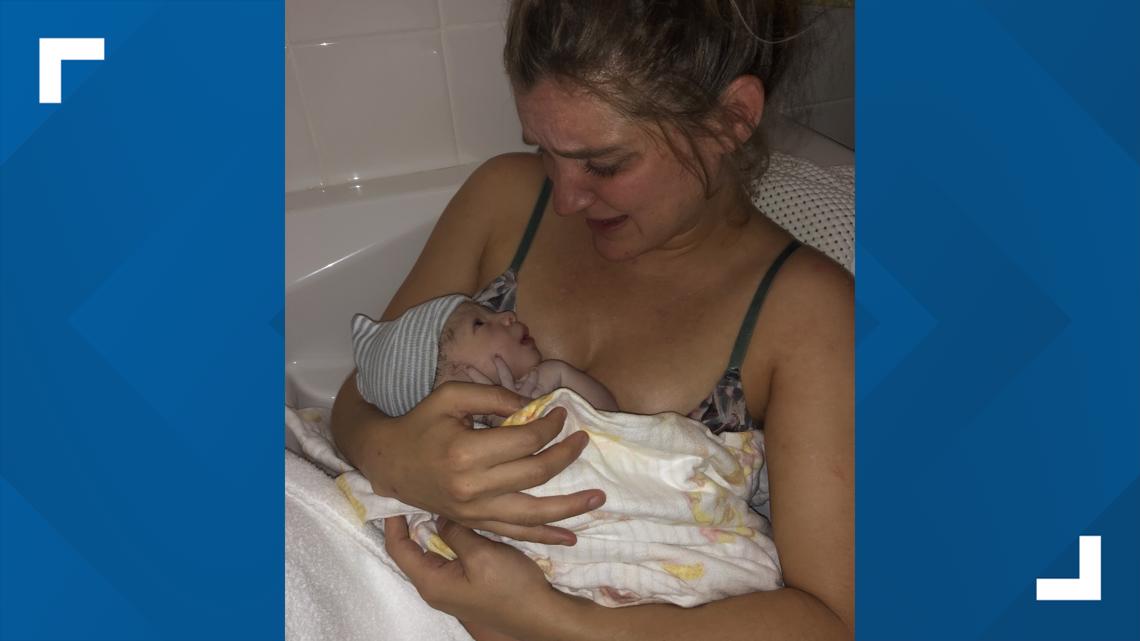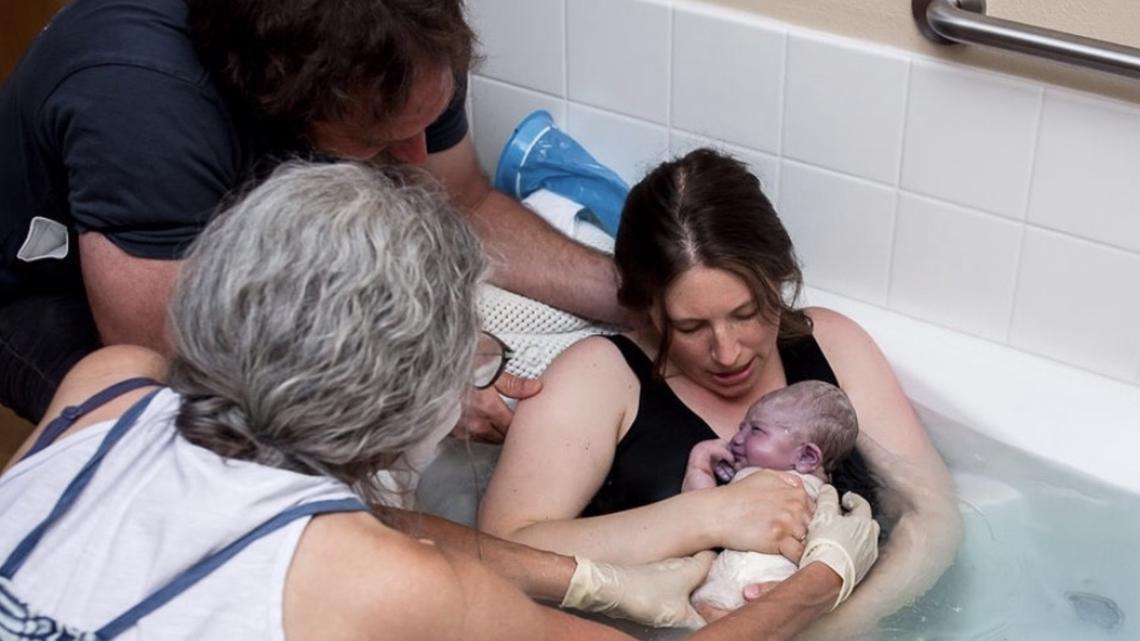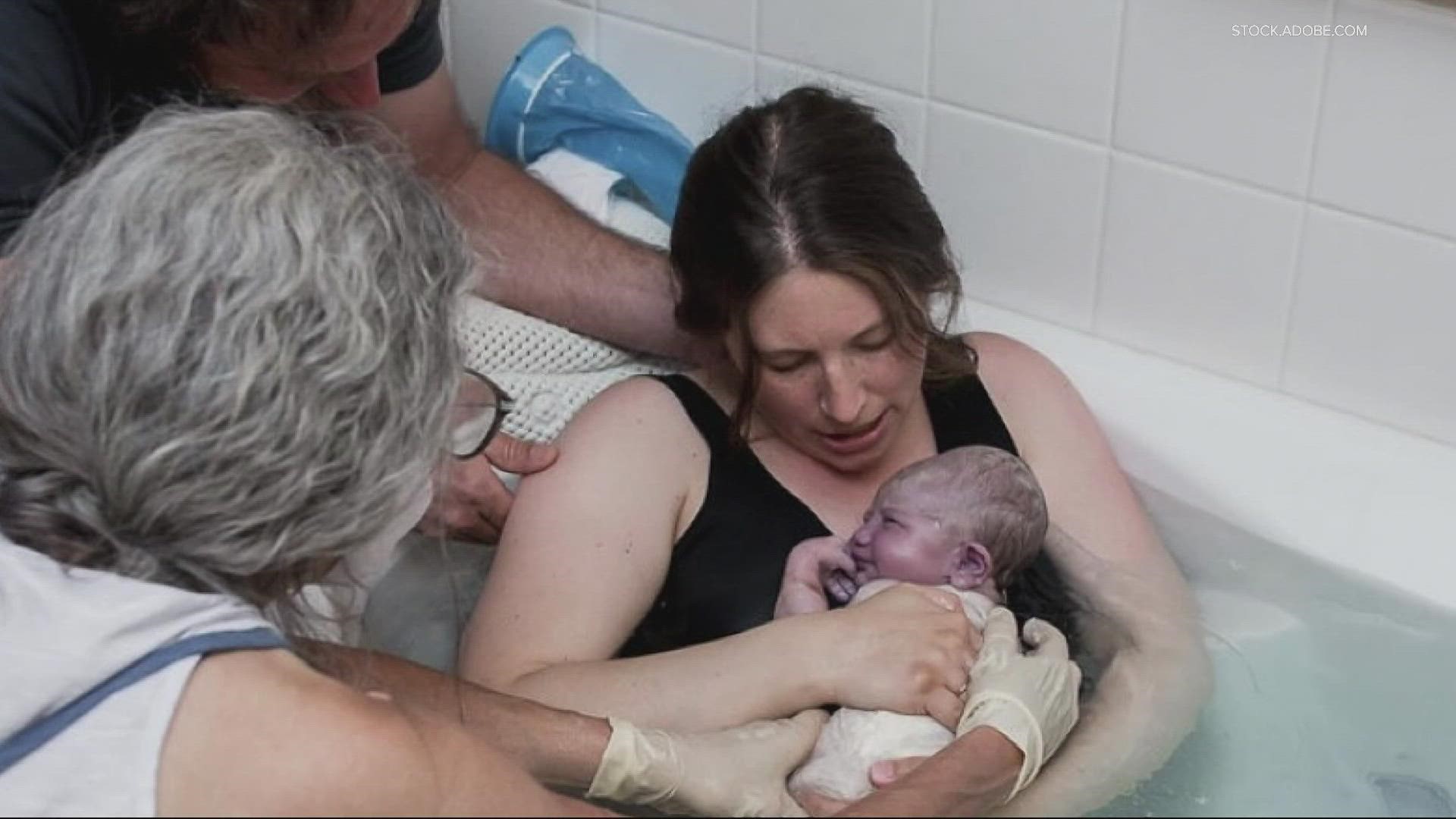CORVALLIS, Ore. — New research from researchers at Oregon State University (OSU) offers strong evidence that water births are a safe option for typical pregnancies.
OSU's study is the largest of its kind to date. Currently, The American College of Obstetricians and Gynecologists recommends against water birth, citing a need for more data. The OSU researchers behind this study said this is the data they’ve been waiting for.
“It’s by far the biggest water birth study that’s ever been published,” said Marit Bovbjerg, lead author and assistant professor of epidemiology in OSU’s College of Public Health and Human Sciences.
Water birth is offered in some hospitals in the U.S. and in Oregon, but is much more rare here than in most developed countries around the world. Only 1.5% of births in the U.S. happen outside of the hospital.
RELATED: 'My mom is having a baby and we're in the bathroom': Molalla girl helps deliver baby brother
“There’s a whole segment of the population out there that would really like another option for pain management that isn’t medication,” said Melissa Cheyney, a co-author of the study and professor of anthropology in OSU’s College of Liberal Arts.
Chelsea Mercado is one of those women. She is a mother of two boys, four-year-old Koah and three-month-old Kai. For both of her deliveries, she chose a water birth at the Corvallis Birth and Wellness Center.


“I would say having my two boys has been just the most amazing experience for me. I’ve never felt more powerful in my life,” she said.
Before becoming a mom, Mercado didn’t give much thought to water birth. It wasn't until someone she knew gave birth underwater that she even considered that option.
“That really got me super curious and so I started doing my own research and decided that I wanted to have a really beautiful birthing experience, and it helped to see that it didn’t have to be a scary thing,” Mercado said.
That is a big reason for this study from OSU: there is high demand for more information and concrete research on the safety of giving birth in the water.
“Most people really want the continued pain relief that warm water immersion can offer during the pushing stage. And as you can imagine, few welcome having to get out of the tub at that moment,” Cheyney said. “The alternative for pain management is epidural anesthesia, and that is not without risk.”
Bovbjerg, Cheyney, and co-author Aaron Caughey from Oregon Health & Science University compared 35,060 pregnancies from all 50 states: 17,530 water births and 17,530 non-water births. A unique aspect of the OSU study was that they were able to match pregnancies within the two groups on more than 80 covariables, such as age, education level and pregnancy characteristics. This propensity score method ensured a direct comparison between the two groups.


“To put that in perspective, the only other study that’s tried to do this matched on only four covariables,” Cheyney said. “Since we matched on more than 80, we feel confident that the two groups we’re comparing are very similar except for where they gave birth: on land or in water.”
“That makes it a really compelling study in terms of research methods,” Bovbjerg said.
In the propensity-matched analysis, the only maternal outcome where water births resulted in a slightly elevated risk was a postpartum uterine infection. Water births were associated with an additional six postpartum uterine infections per 10,000 water births compared with non-water births. However, there was no increase in the risk of being hospitalized for an infection.
Furthermore, water births were associated with lower risks for several other maternal outcomes, including 64 fewer hemorrhages per 10,000 births, and 28 fewer hospitalizations in the first six weeks.


Water births were associated with 20 additional umbilical cord avulsions per 10,000 births. Avulsions occur when the umbilical cord snaps before it can be tied off and can cause hemorrhages. However, there were no infant deaths from cord avulsions and no difference in overall death rates between the two groups. There were 26 fewer infant hospitalizations per 10,000 water births, suggesting that the midwives attending these births successfully managed cases of avulsion.
“So, having your baby underwater certainly is not harmful. It’s just not, and it might arguably be helpful,” Bovbjerg said. “So, there’s really no reason why, given it’s perfectly safe in this community setting, that a hospital — which has a lot more resources and personnel right there, ready to go if something happens — there’s no reason they couldn’t do it.”
The researchers want to make it clear water birth is not right for everyone, but hope this new research will give women solid insight into more options on how they want to bring a life into the world.
“Hopefully this just puts to rest the last resistance to water birth, and we can just move on and start offering it to people because it’s a great pain-relief option during labor,” Bovbjerg said.
Mercado knows her experience of giving birth underwater won’t be exactly the same for other women, but she said she is glad expecting moms will now have more information on their options.
“I really hope that this new research helps to empower women to have babies on their own terms,” Mercado said.

